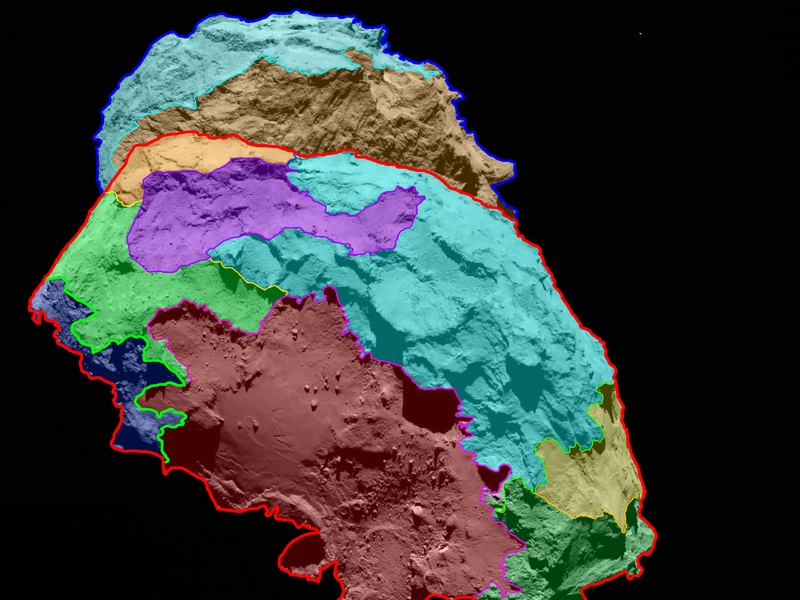Scientists have built a map of comet Churyumov-Gerasimenko based on high-definition images

This photo shows various types of surfaces. The left part of the comet in the photo is a large part of the nucleus, the right is the “head”, the smaller part
November, the moment of the landing probe landing on the surface of the comet Churyumov-Gerasimenko, is getting closer. The interplanetary station Rosetta is now at a distance of several dozen kilometers from the comet, and every hour scientists get all the new information about the comet, its structure and features.
In addition, there are high-resolution photographs obtained using an OSIRIS scientific instrument. Now the detail of photos is very high: 1 pixel = 75 centimeters. According to scientists, this is a record quality of photographs: never before has a man seen the surface of a comet with such high details.
')
On the basis of the latest photos of the cometary core, the experts have compiled a kind of comet map. Scientists identify several homogeneous areas, each of which differs from the neighboring "region" by a particular feature: the presence of boulders, channels, elevations or depressions. Of course, scientists create such a map not for their own pleasure (although this too), but in order to make the task of choosing a landing site for the Philae probe more simple.

The first map of the cometary nucleus is only the beginning of work, since the surface of the comet still needs to be studied, and the timing is rather tight. Already on September 13-14 of this year, the team responsible for the landing of the probe should choose only two landing zones: the main and the alternative. After another couple of weeks, scientists should finally approve the main landing zone for the landing probe, and begin work on the preparation for the landing.
It should be noted that the Rosetta station itself was created by a large number of scientific organizations. Only such organizations as the Max Planck Institute for Solar System Research (Germany, CISAS, University of Padova (Italy), Laboratoire d'Astrophysique de Marseille (France), Instituto de Astrofísica de Andalucia, CSIC (Spain ), Scientific Support Office of the European Space Agency (The Netherlands), Instituto Nacional de Técnica Aeroespacial (Spain), Universidad Politéchnica de Madrid (Spain), Department of Physics and Astronomy of the University of Uppsala, Sweden of the TU Braunschweig (Germany) .
Via mps
Source: https://habr.com/ru/post/236241/
All Articles